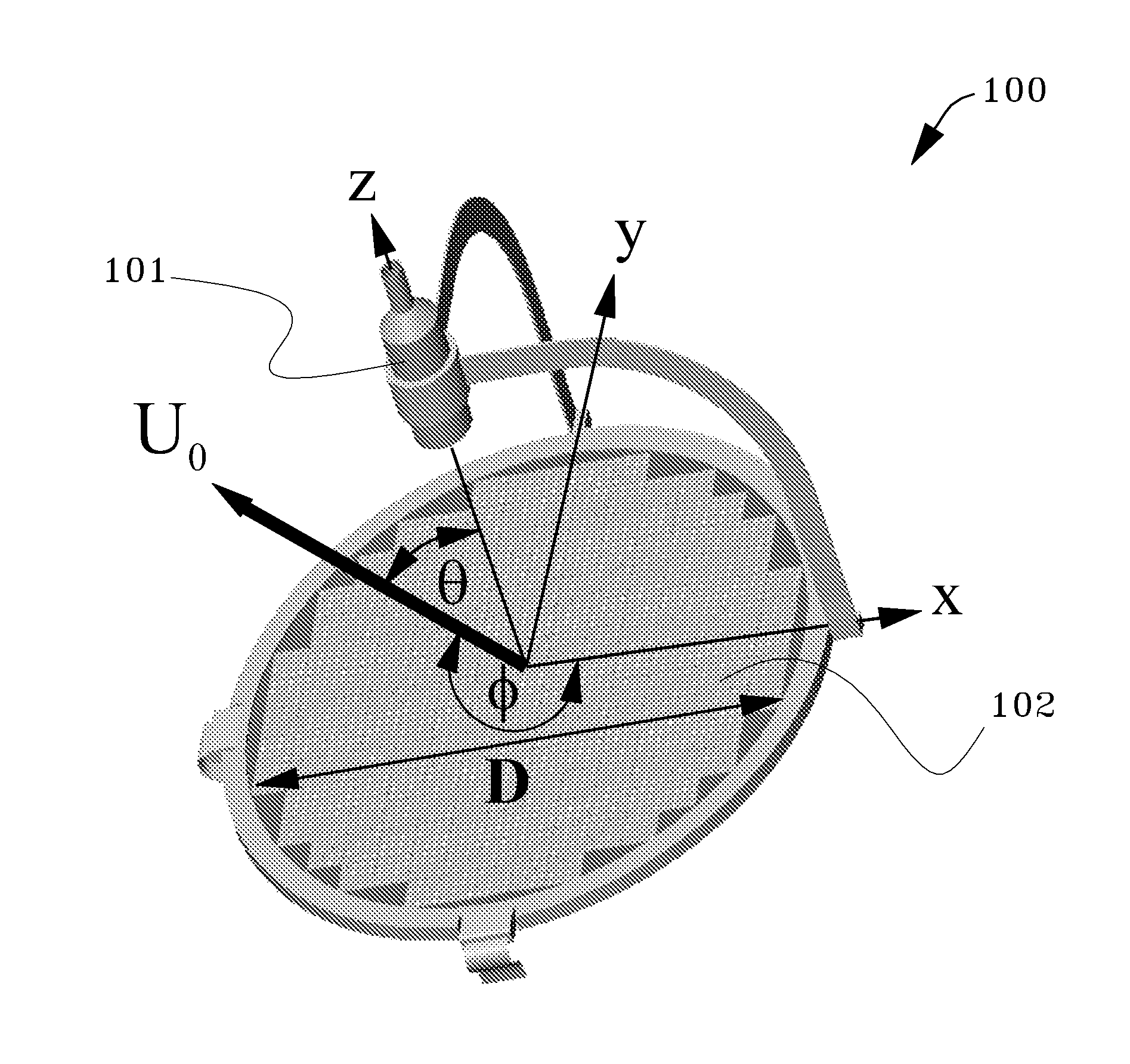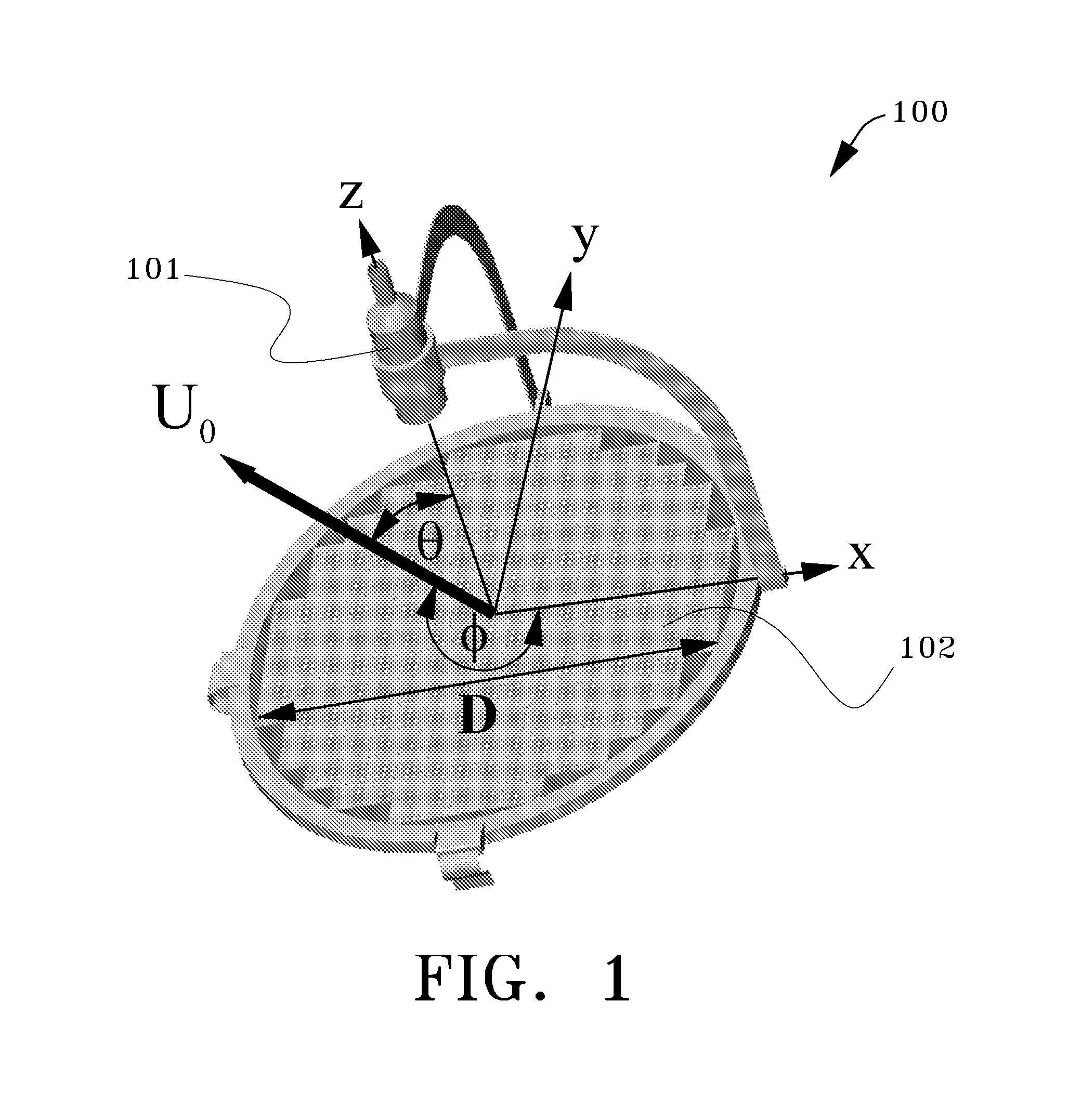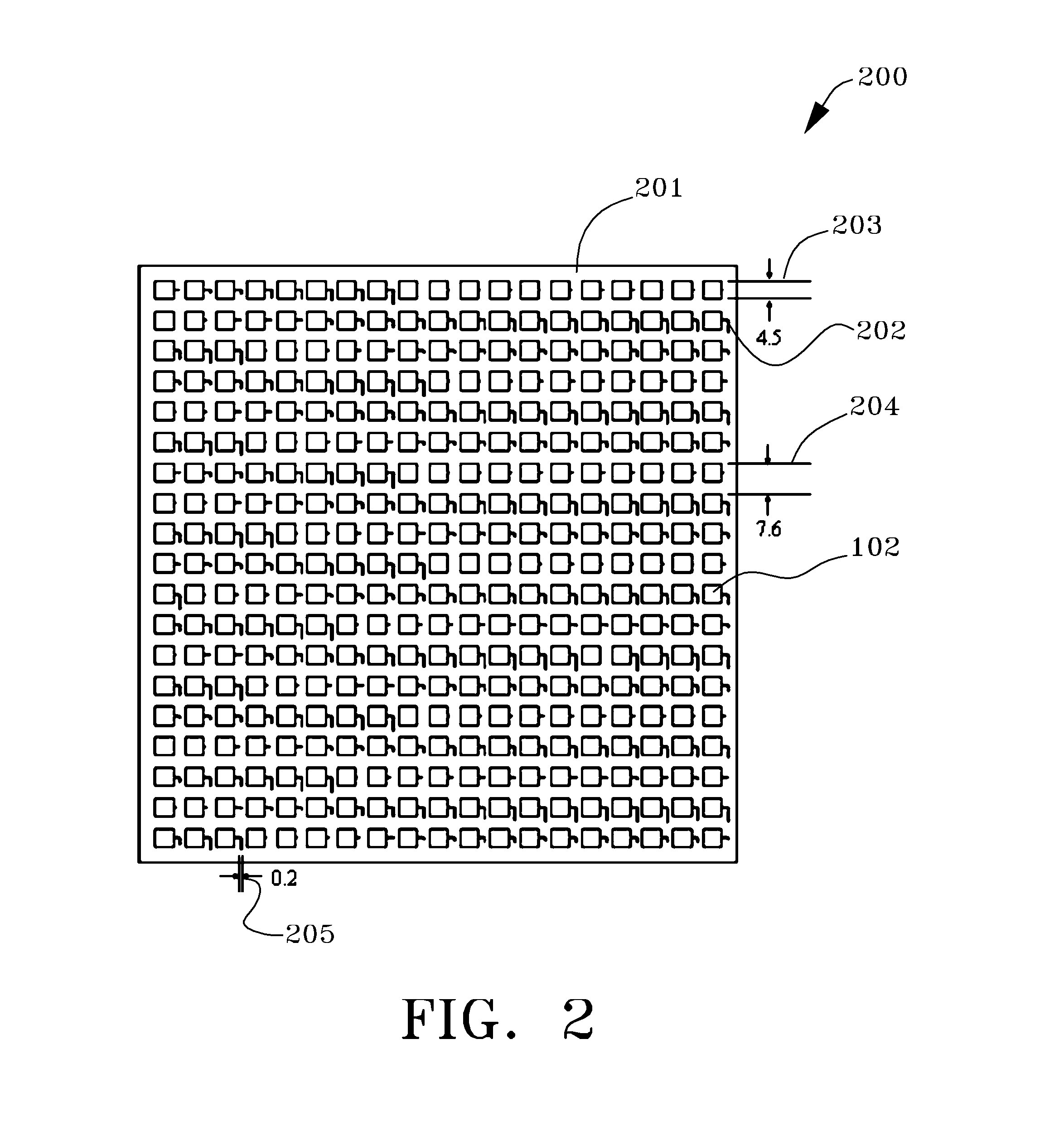Cellular reflectarray antenna and method of making same
a reflector array and antenna technology, applied in the field of reflector arrays, to achieve the effect of convenient and quick installation
- Summary
- Abstract
- Description
- Claims
- Application Information
AI Technical Summary
Benefits of technology
Problems solved by technology
Method used
Image
Examples
Embodiment Construction
[0044]The cellular reflectarray antenna is intended to replace conventional parabolic reflectors that must be physically aligned to a particular satellite in geostationary orbit. Specifically, the cellular reflectarray antenna is designed for a certain geographic location defined by latitude and longitude that is called a “cell”. A particular cell may occupy approximately 1,500 square miles. Other cell sizes are specifically contemplated herein and may be necessary for high±latitudes. The cellular reflectarray antenna designed for a particular cell is simply positioned such that an index aligns to magnetic North and the antenna surface is level (parallel to the level ground). A given cellular reflectarray antenna will not operate in any other cell because the delay lines for the individual elements are specific to that cell.
[0045]The specific design and fabrication of the reflectarrray for a specific latitude and longitude (i.e. a zip code) inherently prevents pirating dish receiver...
PUM
 Login to View More
Login to View More Abstract
Description
Claims
Application Information
 Login to View More
Login to View More - R&D
- Intellectual Property
- Life Sciences
- Materials
- Tech Scout
- Unparalleled Data Quality
- Higher Quality Content
- 60% Fewer Hallucinations
Browse by: Latest US Patents, China's latest patents, Technical Efficacy Thesaurus, Application Domain, Technology Topic, Popular Technical Reports.
© 2025 PatSnap. All rights reserved.Legal|Privacy policy|Modern Slavery Act Transparency Statement|Sitemap|About US| Contact US: help@patsnap.com



